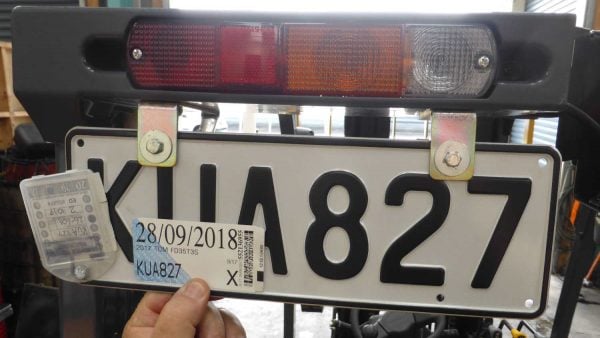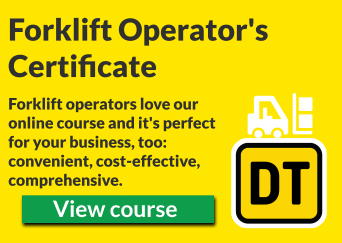To get an F endorsement, you need to do an F endorsement course.
An F endorsement allows you to drive a forklift on a public road, as long as the forklift has a warrant of fitness and a current registration. The definition of ‘road’ is quite broad and includes areas that are generally available to the public.
A forklift F endorsement stays valid as long as your class 1 licence is valid. You can renew the F endorsement by paying a fee when you renew your class 1 car licence.
An Operator’s Certificate (OSH certificate) covers the core theory and basic driving competence that you need to know to operate a forklift in a generic environment using a generic forklift. The operator’s certificate must be renewed every three years.
What extra theory do you need to know for the F endorsement?
When you do the F endorsement course there’s a little extra theory that you need to know. Some of this is already covered in the forklift operator’s certificate course here.
Driving a forklift on the road: this is all simple, basic information that you would already know if you drove a car such as using your indicators and lights, and giving way to other traffic. You’ll need to know what a road is – this is even covered in the learner licence test.
Legal requirements: making sure the WoF and registration are current and that the licence plate, label and WoF label are visible.

Weight limits: if you have a class 1 licence you can drive a forklift up to 18000kg but you need a class 2 licence to drive one that weighs more than 18000kg.
Weights and dimensions
Maximum width is 2.55m, maximum height is 4.3m, maximum weight on a twin-tyred axle is 8200kg, maximum weight on a single-tyred axle is 6000kg, maximum speed for solid tyres and rigid suspension is 10km/h, over-dimension flags are required when the load projects more than 200mm from the body. This is very similar to class 2 requirements.
Documents
Documents that relate to forklift licensing: Truck Loading Code, The Road Code, the Approved Code of Practice and various traffic regulations and legislation
Minimising risk
Travel slowly, use a spotter or someone to help direct traffic, avoid driving when traffic is busy, put out temporary warning signs and cones, use your horn and warning lights to alert other drivers.
Load security
You have to make sure that any load you carry on your forks on a public road is secured properly.
Environmental factors
Weather, lighting, other road users and road conditions + the impact they have on driving the forklift.


